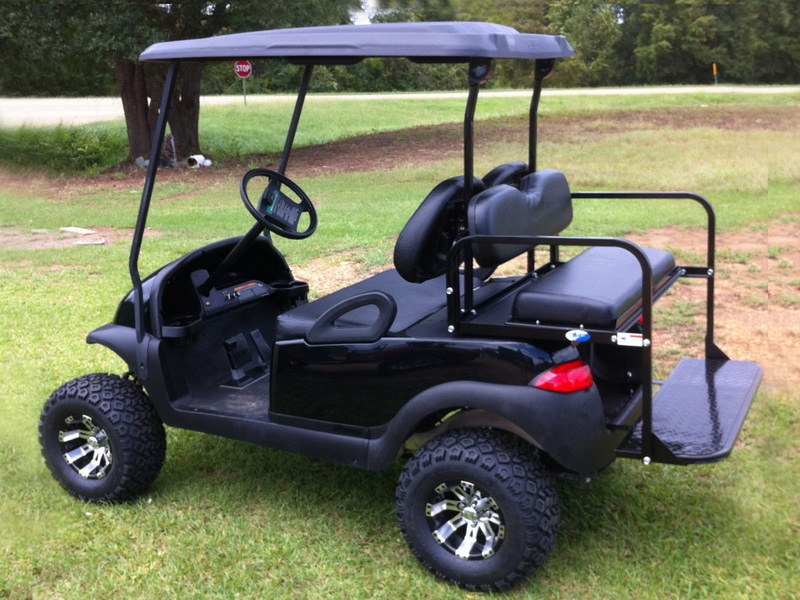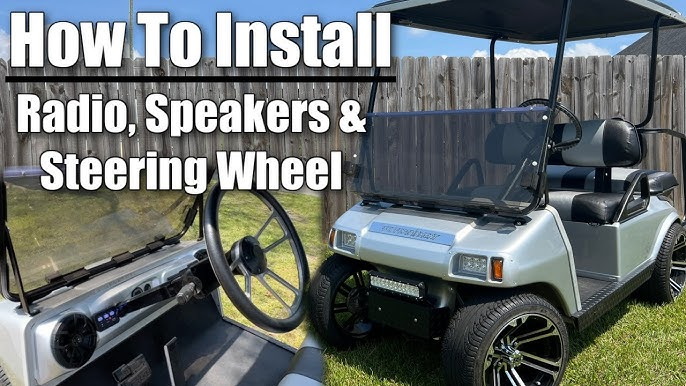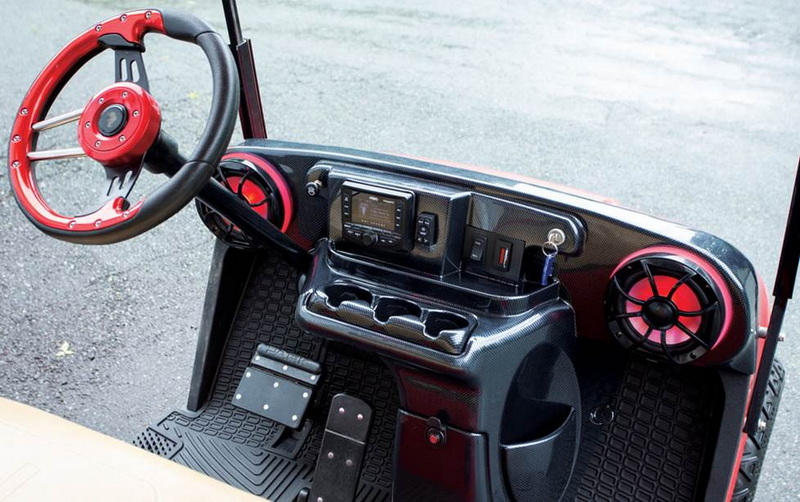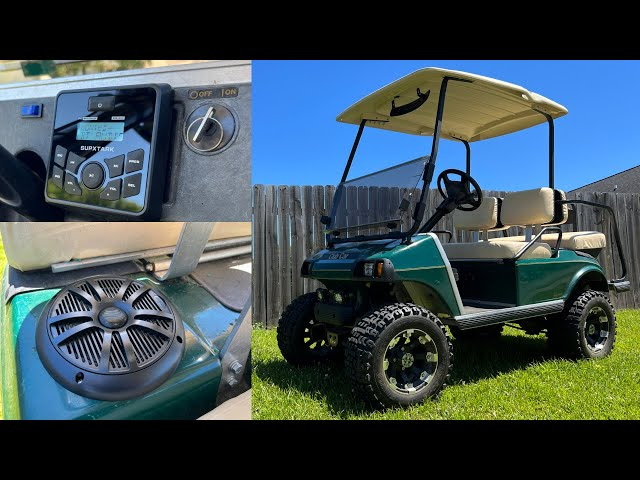Content Menu
● Understanding Your Golf Cart's Electrical System
● Tools and Materials Needed
>> Tools:
>> Materials:
● Choosing the Right Radio
● Step-by-Step Installation Guide
>> Step 1: Prepare Your Golf Cart
>> Step 2: Install the Dash Kit
>> Step 3: Connect Power Wires
>> Step 4: Install Speakers
>> Step 5: Finalize Installation
● Additional Tips for Installation Success
● Troubleshooting Common Issues
● Enhancing Your Audio Experience
● Conclusion
● FAQ
>> 1. What type of radio is best for an electric golf cart?
>> 2. Can I use my existing car stereo in my golf cart?
>> 3. How do I know if my golf cart's battery can support a new radio?
>> 4. Is professional installation recommended?
>> 5. Can I add more speakers later?
Adding a radio to your electric golf cart can significantly enhance your driving experience, whether you're cruising around the golf course, neighborhood, or campground. This comprehensive guide will walk you through the steps of installing a radio in your electric golf cart, covering everything from selecting the right equipment to installation tips and troubleshooting.

Understanding Your Golf Cart's Electrical System
Before diving into the installation process, it's essential to understand the electrical system of your golf cart. Most electric golf carts operate on a 36-volt or 48-volt battery system. To power a standard car radio, which typically requires 12 volts, you'll need to either tap into one of the batteries or use a voltage reducer.
- Batteries: Identify whether your cart has 6-volt or 12-volt batteries.
- Voltage Reducer: If using a 36 or 48-volt system, consider installing a voltage reducer to ensure safe operation of your radio.
Tools and Materials Needed
Before starting the installation, gather the following tools and materials:
Tools:
- Screwdriver
- Wire strippers
- Wire crimpers
- Electrical tape
- Zip ties
- Drill (if necessary)
Materials:
- Radio head unit (preferably designed for golf carts)
- Speakers (marine-grade recommended)
- Wiring harness
- Mounting brackets
Choosing the Right Radio
When selecting a radio for your golf cart, consider the following features:
- Marine Grade: Ensure that the radio is marine-grade to withstand outdoor conditions.
- Bluetooth Capability: Look for models that support Bluetooth for wireless music streaming.
- Weather Resistance: Choose radios with weatherproof ratings to protect against moisture.
Some popular models include:
- Boss Audio Systems MGR350B: A reliable marine gauge receiver with Bluetooth and AM/FM capabilities.
- Pyle PLMRKT38W: Offers superior sound quality with MP3 and USB compatibility.
- Fusion Entertainment MS-RA70: A premium option with high-end design and sound quality.

Step-by-Step Installation Guide
Step 1: Prepare Your Golf Cart
1. Disconnect the Battery: For safety, disconnect the negative terminal of your golf cart's battery before beginning any electrical work.
2. Remove Existing Dash Panel: If your golf cart has an existing dash panel, carefully remove it to access the area where you will install the radio.
3. Plan Your Layout: Before cutting or drilling, plan where each component will go. This includes the radio, speakers, and any additional accessories.
Step 2: Install the Dash Kit
If using a dash kit, fit it into place according to the manufacturer's instructions. This may involve securing it with screws or clips.
1. Drill Holes if Necessary: Some installations may require drilling holes for screws or wiring pathways. Use a drill bit appropriate for the material of your dash.
2. Prepare Wiring Channels: Create pathways for your wires to run neatly behind the dash. This might involve removing panels or creating small channels.
Step 3: Connect Power Wires
1. Identify Power Source: Using your wiring harness, connect the power wire from the radio to the positive terminal of one battery (for a direct connection) or to the output of your voltage reducer.
2. Ground Connection: Connect the ground wire from the radio to either the negative terminal of the battery or to a grounding point on the cart's chassis.
3. Use Heat Shrink Tubing: For all connections, use heat shrink tubing to protect against moisture and short circuits.
4. Fuse Installation: Install an inline fuse on the power wire close to the battery. This protects your radio and cart from electrical issues.
Step 4: Install Speakers
1. Choose Speaker Locations: Common locations include under the dash or on rear-facing panels. Consider water-resistant or marine-grade speakers for better durability.
2. Mount Speakers: Securely mount speakers using screws or brackets provided with them. Ensure they're positioned for optimal sound projection.
3. Connect Speaker Wires: Attach speaker wires to each speaker, ensuring proper polarity is maintained (typically red for positive and black for negative).
4. Weatherproof Connections: Apply silicone sealant around speaker edges and connections to prevent water ingress.
Step 5: Finalize Installation
1. Reattach Dash Panel: Once all connections are made and secure, reattach any dash panels that were removed.
2. Reconnect Batteries: Reconnect the negative terminal of your battery.
3. Test Your System: Turn on your golf cart and test the radio to ensure it works correctly. Adjust volume and settings as needed.
4. Secure Loose Wires: Use zip ties to secure any loose wires, ensuring they don't interfere with moving parts or pedals.
Additional Tips for Installation Success
To ensure a smooth installation process:
- Always refer to specific manufacturer instructions for both your golf cart model and audio equipment.
- Take your time during wiring; double-check connections before powering up.
- If you're unfamiliar with electrical systems, consider consulting with someone experienced in automotive electronics.

Troubleshooting Common Issues
If you encounter issues during or after installation:
- Ensure all connections are secure and properly insulated.
- Check that you have connected to a suitable power source.
- Verify that all components are compatible with each other.
Enhancing Your Audio Experience
Once you have successfully installed your radio system, consider further enhancing your audio experience:
- Add an Amplifier: For improved sound quality and volume, consider integrating an amplifier into your audio setup.
- Install Subwoofers: Adding subwoofers can significantly enhance bass response and overall sound quality.
- Upgrade Wiring: Use high-quality speaker wire and power cables to reduce resistance and improve audio performance.
Conclusion
Installing a radio in your electric golf cart can be a rewarding project that enhances your outdoor experience significantly. With careful planning and execution, you can enjoy music while cruising around in style. Always prioritize safety by disconnecting power sources during installation and ensuring all connections are secure and weatherproofed.

FAQ
1. What type of radio is best for an electric golf cart?
Look for radios specifically designed for outdoor use that are waterproof and vibration-resistant.
2. Can I use my existing car stereo in my golf cart?
While it's possible, it's recommended to use radios designed for golf carts due to their durability against outdoor elements.
3. How do I know if my golf cart's battery can support a new radio?
Check your golf cart specifications; most radios require a 12-volt power supply which can be sourced from one of your batteries or via a voltage reducer if using higher voltages.
4. Is professional installation recommended?
If you're not comfortable with electrical work, it may be wise to hire a professional installer for safety and reliability.
5. Can I add more speakers later?
Yes, additional speakers can be added as long as your audio system supports them and you have sufficient power supply capacity.











































